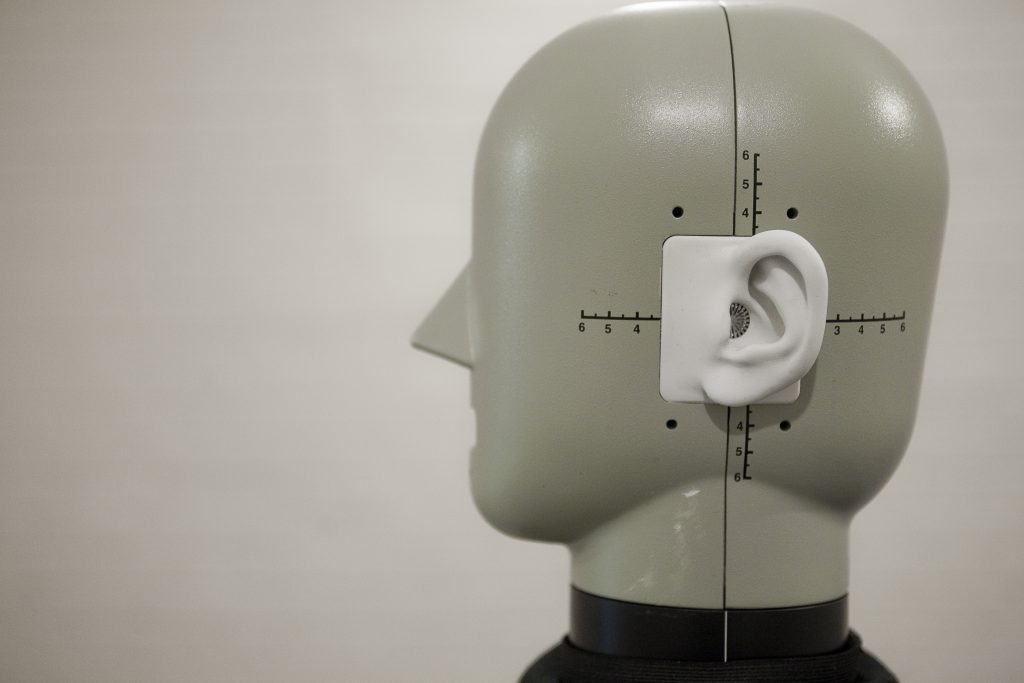Virtual Acoustic Prototypes
What is a Virtual Acoustic Prototype?
A computer representation of parts of a machine, e.g. a washing machine, fridge, lawnmower etc, such that the sound of the assembled machine can be heard, without it necessarily having to exist physically.
What are they used for?
Nowadays, designers of virtually all types of products can ill afford to ignore acoustics. In the field of domestic products, “low noise” has found its way to the top of the advertisers list of desirable features. Perhaps more strikingly, at least one major high-end supplier of automotive steering systems now places acoustics firmly at the top of their list of design priorities. One of the difficulties with acoustics is that the impression given by the sound of a product is subjective and cannot easily be quantified in the form of design targets. Visual designers get round this problem by ‘mocking up’ the design, for example by using computer visualisation tools. Virtual Acoustic Prototypes (VAPs) have been developed in order to provide an equivalent ‘auralisation’ tool. A Virtual Acoustic Prototype can be used to give an impression of the sound the assembled machine will make before it is built. The sound can be played to experts and non-experts.
What VAPs have been constructed?
Dr Andy Moorhouse has taken part in major projects in which VAPs for various machines and products have been developed:
NABUCCO (EC funded, €4.5M, 2000-2003): Fridge, Washing machine, Air handling unit, Chiller, Telecommunications base station;
CHARMS (EPSRC funded, £207k, 2003-2006): Tumble dryer, domestic boiler;
LaMoNoV (Commercially funded, €1.5M, 2004-2006): large, medium and small lawnmowers
Vehicle NVH (commercially funded PhD and MSc projects).
Recent Projects
CHARMS: Vibro-Acoustic Source Strength Methods for Low Noise Design and Virtual Acoustic Prototypes
Sponsor: EPSRC
Collaborators: University of Liverpool
Budget: Overall project budget: £203k
Duration: 3 years
Start date: March 2003
Summary
The research aims to provide tools for designers to reduce noise output and refine acoustic quality of assembled machines. The current limitation on acoustic design is a lack of data and scientific methodology to characterise vibro-acoustic excitation by the active internal components of a machine, motors, pumps, fans, burners etc. New methods will be developed to characterise burners, condensers and rotating components. All the diverse excitation types – airborne, fluid-borne and structure-borne – will be considered simultaneously using an ‘equivalent source methodology’. Additionally, emerging methods to characterise small pumps, fans and motors which have recently been successfully tested on certain machine types will be validated for previously untreated configurations. The developed methods will be used to construct ‘Virtual Acoustic Machine Prototypes’ of two entire working machines, both to validate the methods and to illustrate their use in an advanced design tool.
LaMoNoV: Lawnmower Noise and Vibration
Sponsor: International consortium headed by the European Garden Machinery Manufacturers Federation
Collaborators: CETIM, France; HEAD Acoustics, Germany; Consrtium of European and US manufacturersl
Budget: Overall project budget: €1,500k
Duration: 30 months
Start date: Feb 2004
More information about Virtual Acoustic Prototypes
Download papers on Virtual Acoustic Prototypes (zip file, 2.5Mb). Other papers are available on request that I am not able to post openly due to copyright.
Contact Dr Joshua Meggitt
